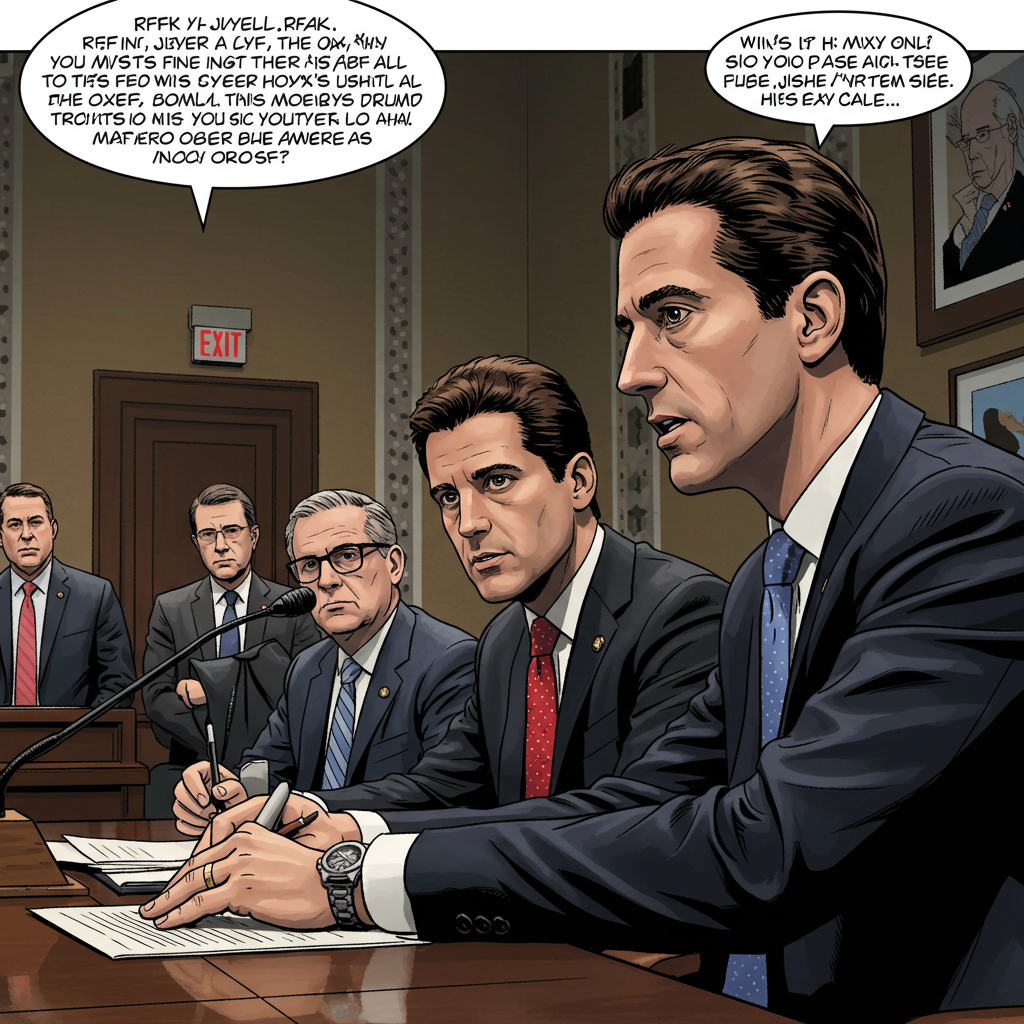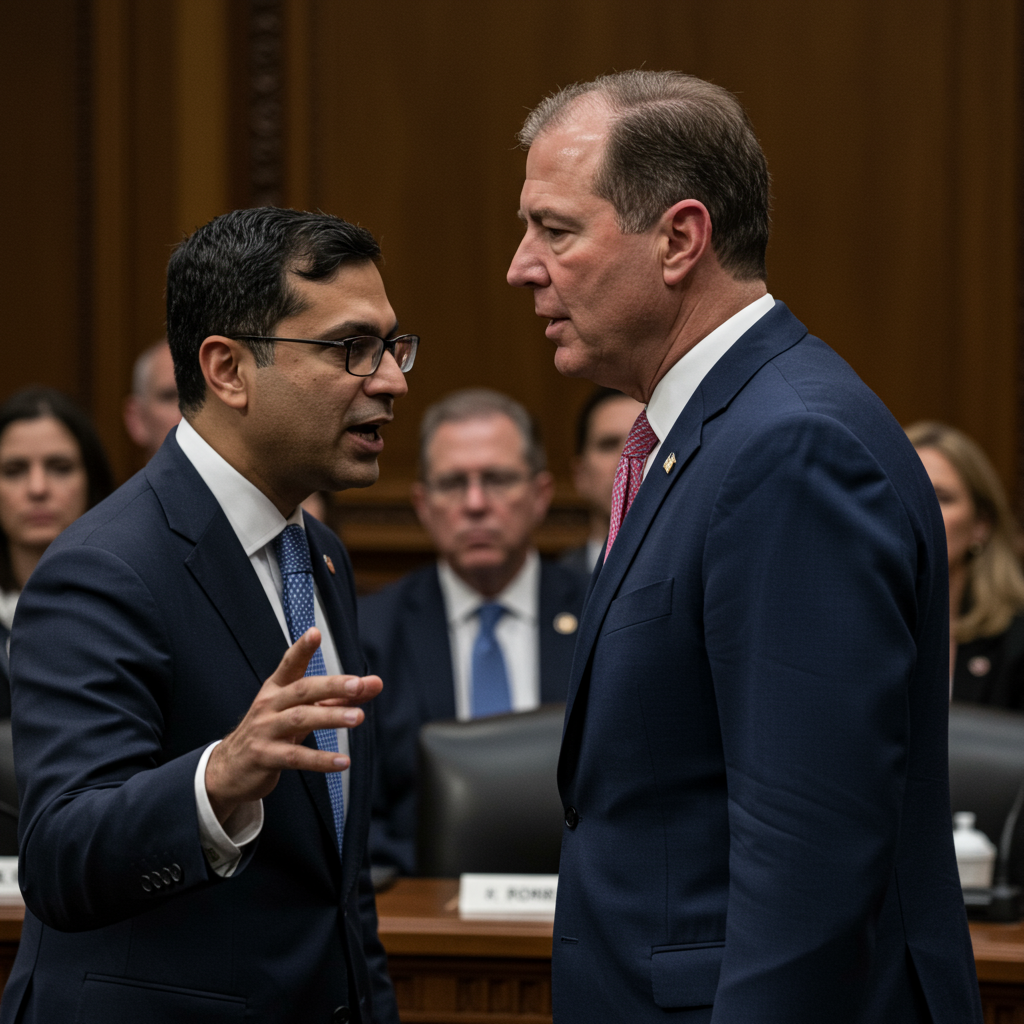In a significant development that has ignited both political debate and public speculation, President Donald Trump has issued a directive for the immediate release of Jeffrey Epstein’s grand jury testimony. This move comes amidst mounting bipartisan pressure and intense scrutiny over the mysterious circumstances surrounding the late financier’s death and the long-standing allegations of child sex trafficking. Attorney General Pam Bondi has formally initiated the legal process, filing a motion with the Southern District of New York to unseal these critical documents. This action underscores a complex interplay of political maneuvering, legal precedent, and an insatiable public desire for transparency.
The President’s Directive and Its Immediate Impact
On Friday, July 18, 2025, the Department of Justice (DOJ) formally filed court papers in Manhattan federal court, specifically seeking to unseal “grand jury transcripts” from Epstein’s 2019 indictment. This direct action followed a request made by President Trump to Attorney General Pam Bondi the previous Thursday evening, urging the release of “pertinent” grand jury testimony. The DOJ’s filing explicitly acknowledged the “public interest” in the investigative work conducted by federal agencies into Epstein’s activities. This directive from the Oval Office, amplified by the President on his Truth Social account, signals a notable shift in the administration’s public approach to the highly sensitive Jeffrey Epstein files.
The Core of the Demand: Grand Jury Secrecy
Grand jury materials are inherently secret, a cornerstone of the U.S. legal system designed to protect witnesses, prevent witness tampering, and ensure the impartiality of the investigative process. The President’s request, while politically charged, must navigate a rigorous legal pathway requiring the explicit approval of a federal judge. Such a judge in the Southern District of New York would carefully weigh the profound implications of unsealing these records, particularly concerning the privacy and protection of victims—a paramount concern for the courts—and any other parties who might be implicated and wish for the information to remain confidential. Legal experts, like former federal prosecutor Mitchell Epner, have described such a government request as “highly unusual” and unprecedented in their experience, highlighting the potentially “enormous” scope of materials, including exhibits that witnesses may have testified about.
The Broader Context: Public and Political Pressure
The President’s directive is not an isolated event; it is a direct response to a torrent of public and political pressure that has coalesced around the Epstein case. Lawmakers from across the political spectrum, alongside media figures and the public, have demanded greater transparency. This intense interest has been significantly fueled by various conspiracy theories, including those suggesting a “deep state” cover-up designed to shield powerful individuals connected to Epstein. Many supporters of the President, in particular, have expressed deep disappointment over perceived previous inaction on releasing these files, recalling campaign-era assurances of full disclosure.
The WSJ Controversy and Trump’s Legal Battle
Adding a dramatic layer to the unfolding narrative, President Trump filed a federal lawsuit against The Wall Street Journal and its owner, Rupert Murdoch, along with NewsCorp, its CEO Robert Thomson, and two Journal reporters. This legal action, seeking “at least $10 billion in damages,” stems from a Journal report alleging that Trump contributed a “bawdy” letter and a drawing of a naked woman’s silhouette to a birthday album for Epstein’s 50th birthday in 2003. The alleged drawing featured “a pair of small arcs” for breasts, with “the future president’s signature… a squiggly ‘Donald’ below her waist, mimicking pubic hair.” The President vehemently denies authoring or drawing any such material, branding the report as “fake, malicious, defamatory” and part of what he terms “the Epstein Hoax.” This public denial and subsequent lawsuit highlight the President’s efforts to distance himself from Epstein amidst renewed scrutiny.
Bipartisan Calls for Unsealing: A United Front?
The push for releasing the Jeffrey Epstein grand jury testimony has garnered rare bipartisan support. Prominent voices from both sides of the aisle have echoed the call for full transparency. House Speaker Mike Johnson has stated, “All the credible evidence should come out.” Republican Rep. Thomas Massie of Kentucky introduced a discharge petition aimed at forcing a House vote on the complete release of the Epstein files, emphasizing that “We all deserve to know what’s in the Epstein files, who’s implicated, and how deep this corruption goes.” Similarly, California Democrat Rep. Ro Khanna has been a vocal proponent of “full transparency,” advocating for the release of “interview memos,” “emails, the texts,” while ensuring strict protection of victim identities. Khanna articulated that such transparency is vital for restoring “trust in the government” and for demonstrating whether the system will hold the powerful accountable. Both Trump and Pam Bondi had made campaign promises about releasing information related to Epstein, adding to the pressure.
Unpacking the DOJ’s Shifting Stance on Epstein Files
The recent demand for grand jury testimony marks another twist in the DOJ’s handling of Epstein-related information. Earlier in the month, a two-page memo from the DOJ and FBI asserted that an “exhaustive review” found no evidence that Epstein maintained a “client list” of individuals involved in sex trafficking or that he blackmailed prominent associates. This finding directly contradicted previous public statements made by Attorney General Pam Bondi, who had, in February, even suggested a “client list” was “sitting on my desk.” This memo sparked significant “furor” among segments of the President’s base, who felt that prior assurances of transparency were not being met. Despite the current push for grand jury records, the DOJ and FBI still possess numerous other unclassified records in the case, including visitor logs to Epstein’s private island, which they have indicated they will not disclose, citing sealing orders and the need to protect sensitive victim details.
The Complexities of Unsealing Sensitive Documents
The process of unsealing grand jury records is far from immediate. A federal judge must meticulously review the materials, assessing the potential impact on victims, witnesses, and any uncharged third parties. This judicial review often involves careful redactions to protect personal identifying information and sensitive details pertaining to victims. Even with the government’s formal request, the release could take “weeks” or “months,” given the intricate legal protocols involved. Furthermore, individuals mentioned in the testimony, including both Epstein’s associates and alleged victims, could potentially object to disclosures, further complicating and delaying the process. The 2019 case specifically pertains to allegations against Epstein and his alleged sex crimes, not necessarily the broader questions about other individuals that some of the President’s supporters are pursuing.
Understanding the “Epstein Hoax” Narrative
President Trump has consistently sought to frame the ongoing interest in Epstein materials as a “hoax” or a “SCAM.” His rhetoric has notably shifted over time, initially labeling Republican supporters interested in the files as “stupid” and “foolish,” but later blaming Democrats for perpetuating the “SCAM.” Without providing evidence, he has even alleged that Democrats and former officials “doctored files” related to Epstein, drawing parallels to other politically charged controversies. This narrative underscores the deeply politicized nature of the Epstein saga, where calls for transparency often intersect with broader partisan battles and conspiracy theories. The White House has also definitively ruled out the appointment of a special prosecutor in the Epstein case, further emphasizing that direct control over the release of information rests with the Department of Justice and the judges involved, not the President.
The Path Forward: What to Expect Next
The decision to unseal the grand jury testimony lies squarely with the federal judiciary. While the President’s directive applies significant political pressure, the legal system will operate independently, balancing the public’s right to know with the imperative to protect sensitive information and ensure due process. The current developments suggest an ongoing legal and political struggle, with further motions, hearings, and potential appeals likely. The outcome will shape not only the public’s understanding of the Epstein case but also perceptions of government transparency and accountability.
Frequently Asked Questions
What specifically is President Trump requesting be unsealed regarding Jeffrey Epstein?
President Trump has directed Attorney General Pam Bondi to seek the public release of “grand jury testimony” related to Jeffrey Epstein’s 2019 federal indictment for child sex trafficking. This request, formalized by a Department of Justice motion filed in the Southern District of New York, aims to make public the transcripts and potentially exhibits from the secret grand jury proceedings, though it allows for appropriate redactions to protect victims’ identities and other sensitive personal information.
What is the legal process for unsealing grand jury testimony in a federal case?
Unsealing grand jury testimony in a federal case requires a formal motion filed by a party (in this instance, the Department of Justice) seeking judicial approval. A federal judge must then carefully review the request, weighing the public interest in disclosure against the fundamental secrecy of grand jury proceedings. The judge considers factors like the protection of victims, witnesses, and unindicted parties, often requiring extensive redactions before any material can be released. This is typically a rigorous and time-consuming process that can take weeks or even months.
How has President Trump’s stance on the Epstein files evolved, and why?
President Trump’s public stance on the Epstein files has shifted significantly. Initially, he publicly distanced himself from Epstein and, at times, criticized “stupid” and “foolish” lawmakers, including some in his own party, who sought more transparency, labeling the ongoing interest as a “hoax.” More recently, in response to intense public and bipartisan pressure, and particularly following a controversial Wall Street Journal report he vehemently denies, Trump has reversed course. He now calls for the release of grand jury testimony, framing the continued scrutiny as a “SCAM perpetuated by the Democrats,” and claiming hidden or “doctored files.” This evolution reflects a response to both external pressure and internal political dynamics.
The unsealing of the Jeffrey Epstein grand jury testimony remains a high-stakes issue, embodying a complex intersection of justice, political influence, and public demand. As the legal process unfolds in the Southern District of New York, the world watches, eager for clarity on a case that continues to generate more questions than answers. The outcome of these efforts will undoubtedly leave a lasting mark on public trust and perceptions of accountability for the powerful.



